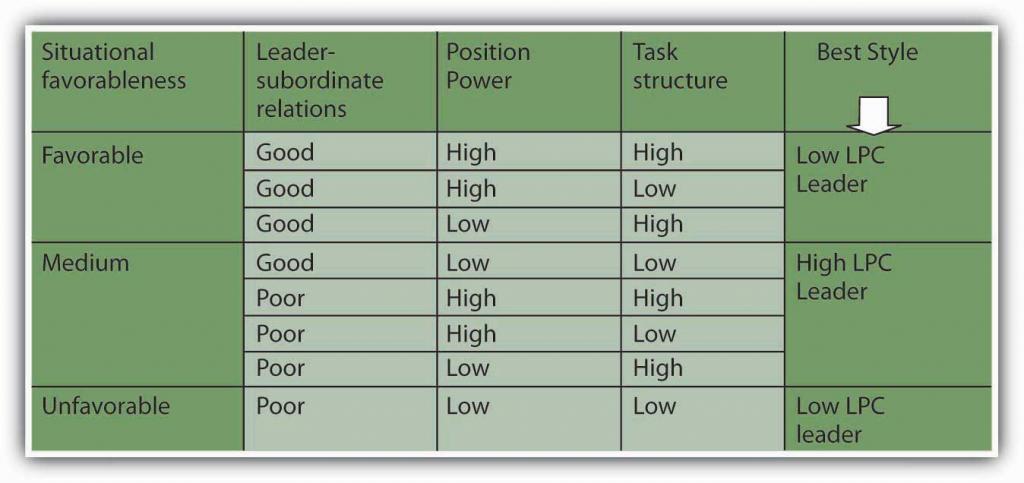10.5: What Is the Role of the Context? Contingency Approaches to Leadership
- Page ID
- 4825
Learning Objectives
- Learn about the major situational conditions that determine the effectiveness of different leadership styles.
- Identify the conditions under which highly task-oriented and highly people-oriented leaders can be successful based on Fiedler’s contingency theory.
- Discuss the main premises of the Path-Goal theory of leadership.
- Describe a method by which leaders can decide how democratic or authoritarian their decision making should be.
What is the best leadership style? By now, you must have realized that this may not the right question to ask. Instead, a better question might be: under which conditions are different leadership styles more effective? After the disappointing results of trait and behavioral approaches, several scholars developed leadership theories that specifically incorporated the role of the environment. Researchers started following a contingency approach to leadership—rather than trying to identify traits or behaviors that would be effective under all conditions, the attention moved toward specifying the situations under which different styles would be effective.
Fiedler’s Contingency Theory
The earliest and one of the most influential contingency theories was developed by Frederick Fiedler (Fiedler, 1967). According to the theory, a leader’s style is measured by a scale called Least Preferred Coworker (LPC) scale. People who are filling out this survey are asked to think of a person who is their least preferred coworker. Then, they rate this person in terms of how friendly, nice, and cooperative this person is. Imagine someone you did not enjoy working with. Can you describe this person in positive terms? In other words, if you can say that the person you hated working with was still a nice person, you would have a high LPC score. This means that you have a people-oriented personality and you can separate your liking of a person from your ability to work with that person. However, if you think that the person you hated working with was also someone you did not like on a personal level, you would have a low LPC score. To you, being unable to work with someone would mean that you also dislike that person. In other words, you are a task-oriented person.
According to Fiedler’s theory, different people can be effective in different situations. The LPC score is akin to a personality trait and is not likely to change. Instead, placing the right people in the right situation or changing the situation is important to increase a leader’s effectiveness. The theory predicts that in “favorable” and “unfavorable” situations, a low LPC leader—one who has feelings of dislike for coworkers who are difficult to work with—would be successful. When situational favorableness is medium, a high LPC leader—one who is able to personally like coworkers who are difficult to work with—is more likely to succeed.
How does Fiedler determine whether a situation is favorable, medium, or unfavorable? There are three conditions creating situational favorableness: (1) leader-subordinate relations, (2) position power, and (3) task structure. If the leader has a good relationship with most people, has high position power, and the task is structured, the situation is very favorable. When the leader has low-quality relations with employees, has low position power, and the task is relatively unstructured, the situation is very unfavorable.
Research partially supports the predictions of Fiedler’s contingency theory (Peter, et. al., 1985; Strube & Garcia, 1981; Vecchio, 1983). Specifically, there is more support for the theory’s predictions about when low LPC leadership should be used, but the part about when high LPC leadership would be more effective received less support. Even though the theory was not supported in its entirety, it is a useful framework to think about when task- versus people-oriented leadership may be more effective. Moreover, the theory is important because of its explicit recognition of the importance of the context of leadership.
Figure 10.10 Situational Favorableness

Based on information in Fiedler, F. (1967). A Theory of Leadership Effectiveness. New York: McGraw-Hill; Fiedler, F. E. (1964). A contingency model of leader effectiveness. In L. Berkowitz (Ed.), Advances in Experimental Social Psychology (Vol. 1, pp. 149–190). New York: Academic Press.


